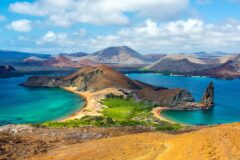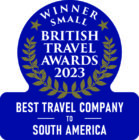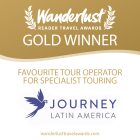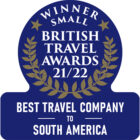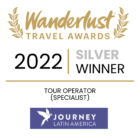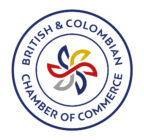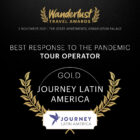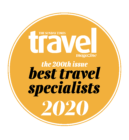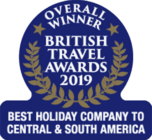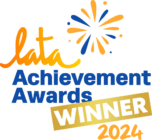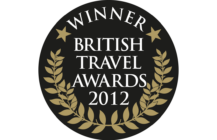
Overview & Highlights
An exhilarating exploration of the three Guianas, set between the Caribbean and the Amazon basin, a cultural medley and profusion of wildlife.
- Village tour at Danpaati River Lodge
- Rainforest walk and choice of activities, Danpaati
- Paramaribo city tour
- Kourou Space Station
- Iles du Salut (Devil's Island)
- St Joseph's church, Iracoubo
- Georgetown: city tour with markets
- Kaieteur Falls
- Hike to Turtle Mountain
- Iwokrama Canopy Walkway
- Visit Surama community
- Climb Surama mountain
This holiday to the three Guianas operates with fixed-date departures, and groups you with other like-minded travellers keen to explore the trio of remote and fascinating destinations. While you can also book it privately, choosing your preferred dates, bear in mind that tourism is still in its infancy here and infrastructure for visitors and residents alike is rudimentary. The cost will therefore be significantly higher and confirmation dependent on availability.
The three Guianas, which fringe the Caribbean coast of South America and extend south into Amazonia, represent the evolution of territory controlled by three European colonial powers. As such, Suriname, French Guiana and Guyana have absorbed aspects of the cultures and languages of the Netherlands, France and Great Britain respectively, while also retaining many features of their indigenous cultures and the traditions of former African slaves. This extraordinary journey through all three of these little-visited, under-developed countries, reveals their individuality, but also the harmony of their natural landscapes, their plethora of wildlife and their stunning wilderness views.
Start your adventure in Suriname, perhaps the least known and understood of the three, with a rich way of life reflecting a mélange of cultures. Its capital, Paramaribo, is a unique mix of Dutch, African and local indian influences; Georgetown in Guyana has a British Caribbean flavour, while Cayenne in French Guiana is legally a part of France. But head south into the back country of each and you’ll be amazed by the exotic birdlife, mammals, reptiles and tropical plants which transcend borders.
Outline itinerary
Day 1
Transfer to your hotel in Paramaribo.
Day 2
By road and motorised canoe to your riverside lodge.
Day 3
Visit indigenous village and the Maroon museum.
Day 4
Return to Paramaribo by river and road. Sunset dolphin spotting tour.
Day 5
Guided city tour of Paramaribo.
Day 6
Travel to Cayenne in French Guiana (Guyane)
Day 7
Guided visit to Devil’s Island.
Day 8
Return to Paramaribo via Space Centre
Day 9
Fly to Georgetown
Day 10
Fly south to Kaieteur Falls in the deep interior.
Day 11
Fly to Iwokrama, hike up Turtle mountain, go jaguar spotting.
Day 12
Explore the Iwokrama Canopy Walkway.
Day 13
Surama village; river otter-spotting canoe ride.
Day 14
Surama Mountain; transfer to Rupununi airstrip, fly to Georgetown.
Day 15
Transfer to the airport for your international flight.
Itinerary
Day 1
Transfer to your hotel in Paramaribo.
You’ll be collected from the international airport and accompanied to your hotel in Suriname’s capital, Paramaribo. You’ll soon realise you have arrived somewhere very special, and very different from anywhere you may have been before in South America. More than half of Suriname’s population of around two thirds of a million people lives in the coastal capital, which nevertheless has a pleasant, small-town feel.
Suriname is a former Dutch colony and it was people brought here by them that founded this unusual town, which expanded in the 17th and 18th centuries. As a result of its unique charms and cosmopolitan mix of cultural influences, Paramaribo was declared a UNESCO World Heritage Site in 2002. The original and highly characteristic street plan of the historic centre remains intact, partly owing to low economic activity. Its buildings illustrate the gradual fusion of Dutch influence with traditional indigenous techniques and materials which blend to create a new architectural idiom.
This tropically-infused architecture is characterised by wooden mansions embellished with ornate balconies and a smattering of Dutch churches. Present-day culture and cuisine are manifested in the town with an intriguing blend of indigenous South American, European, African and Asian elements.

Day 2
By road and motorised canoe to your riverside lodge.
Depart Paramaribo by road and arrive at the tiny village and river port of Atjoni. Motorised canoes are lined up on the beach, painted in bright primary colours, and you climb aboard one for the next stage of your adventure. A skilled crew will navigate up the rainforest-fringed upper Suriname river – which is famous for its breathtaking rapids – to your lodge. Your day comes to an end back on the water with a trip looking for caiman sprawling out on the riverbanks.

Day 3
Visit indigenous village and the Maroon museum.
Afterwards you might choose to enjoy a massage using a combination of traditional and Western techniques. Opportunities to explore the surrounding area are available – go fishing or take a dugout canoe around the island. After dinner there’s a performance of traditional dances presented by members of the local population.
Today you will visit one of the 12 villages that are affiliated with Danpaati. There will be a guided tour through the village where you will be introduced to the way of life of the local population and to the traditions brought from Africa by their ancestors. Afterwards, visit the Maroon museum Saamaka, which is dedicated to the cultural heritage of the Saramak Maroon population. In the museum you will learn about the history of the Maroons, their ancient traditions and crafts.
In the afternoon, take a rainforest walk, then choose to enjoy a massage, go fishing or take a dugout canoe around the island. After dinner you can enjoy a traditional and cultural dance performance.

Day 4
Return to Paramaribo by river and road. Sunset dolphin spotting tour.
This morning depart by dugout canoe from Danpaati to Atjoni. From Atjoni you continue your journey back to Paramaribo by road.
Upon arrival, there’s an optional sunset dolphin-spotting tour. Enjoy the cool breeze and river views while the captain scans the horizon for the dolphins. Groups of up to 20 dolphins may be seen – they can be very curious and jump and play close to the boat. Afterwards you’ll visit a former plantation to savour freshly made local snacks while enjoying the beautiful sunset.
Day 5
Guided city tour of Paramaribo.
Today’s the day for a guided tour of the capital by car and on foot, exploring the most prominent historic locations. There are 291 listed monuments in Paramaribo and only a few have been replaced by new developments. Your guide will tell you about the history of Fort Zeelandia, built in 1667, the presidential palace, and Independence Square, among other places of interest.
After a stroll along the bank of the Suriname river and through the extensive public park, known as the Garden of Palms, you will view other fascinating sites such as a mosque which sits harmoniously next to a synagogue. Cross the Suriname river and make a stop at Peperpot, one of the oldest plantations in Suriname, which was established by the English before Suriname was conquered by the Dutch in 1667. Thereafter, stop at a mini sugar plantation museum, before enjoying lunch in a typical Javanese restaurant. Travel on to the confluence of the Commewijne and Suriname rivers at Nieuw Amsterdam, before finishing the tour with a visit to the outdoor museum in its large fortress.

Day 6
Travel to Cayenne in French Guiana (Guyane)
Transfer by land and boat to Saint Laurent, then continue for a brief stop visiting the well-preserved Transportation Centre, a facility which served as the process point for convicts being allocated to the various penal colonies in French Guiana. Starting in the mid-18th century the majority of French convicts were transported to French Guiana where they served their sentences. They then had to spend the same amount of time here as their sentence before gaining their freedom. This process was introduced in an effort to populate the colony. One of the most famous inmates was Papillion whose initials are carved in one of the cells.
A hard-to-miss curiosity just offshore is the shipwreck of the British steamer Edith Cavel, so overgrown with trees and shrubs that it could be mistaken for a natural island. It partially sank in bad weather in 1924. The final leg of your journey will take you to the capital city of Cayenne where you will overnight.

Day 7
Guided visit to Devil’s Island.
What is commonly referred to as Devil’s Island is really a triangle of three islands – Îles du Salut, or the Salvation Islands – 10.5km off the coast of Kourou. The islands played a central role in French history as far back as 1792, when they were a transit point for explorers, then a gateway for slaves and later, a jail for political prisoners.
You will head along the coast to Kourou, from where you set sail aboard a motorised catamaran to Île Saint-Joseph, home to the most striking of the incarceration facilities which made up the notorious penal colony. The prison buildings here are quite well preserved, and you can meander at will through the cell blocks, dormitory buildings, and other structures. The sight of nature slowly, but relentlessly, reclaiming the land here is remarkable. You’ll lose count of how many tree roots you see growing out of one cell door and curving around to enter an adjacent cell. Île Royale is the site of the oldest buildings on the islands, featuring an old church, administration buildings, officers’ quarters and nowadays a good restaurant. Île du Diable (Devil’s Island) itself is inaccessible to visitors due to dangerous shoreline conditions. This is the island where the prison’s best-known occupant, Alfred Dreyfus, was famously held. After visiting the two accessible islands, return to Kourou by catamaran, before continuing by land to your hotel.

Day 8
Return to Paramaribo via Space Centre
Visit the Centre Spatiale Guyanaise (Guiana Space Centre) for a tour. Launch schedules are a closely-held secret so your schedule may be amended at short notice. The usual visit includes a motor coach tour which criss-crosses the centre’s mammoth facility, including stops at various assembly buildings and control centres. The entire tour is only offered in French, but your guide will supply translations as often as possible.
From here, continue for a brief stop in St Joseph’s church in Iracoubo. The entire interior of the church was hand-painted by one of the convicts from a nearby penal colony.
Then continue by land and water to Paramaribo for another overnight stay.

Day 9
Fly to Georgetown
Fly by light aircraft to Georgetown, Guyana.
Upon arrival, Chef Delven Adams will guide you around Bourda Market, the largest of the four markets in Georgetown. Then take a tour of the city of Georgetown. The capital of Guyana was largely designed by the Dutch and is laid out in a rectangular pattern with wide tree lined avenues and irrigation canals.
Most of the buildings in the city are wooden with architecture dating back to the 18th and 19th centuries. There are several excellent examples of old colonial homes, such as the State House, built in 1852. Among historic sites to visit is the 1892 St. George’s Cathedral, one of the world’s tallest free standing wooden buildings; the Town Hall, a splendid example of Gothic architecture, and the Victoria Law Courts.
Dip into another market, Stabroek, which sells every conceivable item from household goods and gold jewellery to fresh meat and vegetables brought to town daily by river. You will later arrive at the Backyard Café for a drink or lunch prepared by Chef Delvin.
In the afternoon, cruise along the bank of the Demerara river, while your guide gives you a brief history of the famous buildings along the waterfront. As the sun sets over the river you may witness a flock of brilliant egrets and scarlet ibis.

Day 10
Fly south to Kaieteur Falls in the deep interior.
This morning there is an optional bird-watching visit to the Botanical Gardens, which house one of the most extensive collections of tropical flora and fauna in the Caribbean. Then take a flight over the Demerara and Essequibo rivers and swathes of unbroken tropical rainforest to land at Kaieteur Falls, the world’s highest free-falling waterfall.
Kaieteur Falls was first spotted by a European on April 29, 1870. The water flows over a sandstone conglomerate tableland into a deep gorge – a drop of 225m, five times the height of Niagara Falls. Kaieteur supports a unique micro-environment that is home to a diverse range of wildlife, including the rarely seen Guiana Cock- of-the-rock. After spending exploring the falls, you will fly back to Georgetown.

Day 11
Fly to Iwokrama, hike up Turtle mountain, go jaguar spotting.
Fly across the forest to Fair View airstrip from where you will be escorted to Iwokrama River Lodge. From here, depart by boat, birdwatching along the way, for a hike up Turtle Mountain. A well-maintained trail winds through the forest before an exhilarating climb to its summit at 360 metres above sea level. It takes a couple of hours, but the effort is more than worth it for the breathtaking views over the forest canopy and chances of spotting green aracari, white bellbird and five species of eagle. This trail is also a great place to see black spider and red howler monkeys. Alternatively, take a boat trip to Lake Stanley to search for giant river otters and black caimans.
Later, transfer by 4WD along a trail frequented by jaguars, to your accommodation.

Day 12
Explore the Iwokrama Canopy Walkway.
Traverse the Iwokrama Canopy Walkway, which has four suspension bridges leading to three platforms, the highest of which is over 30m above the ground. Keep your eyes peeled for canopy species which would not be visible from the forest floor.
Then enjoy wildlife and birdwatching walks on the ground-based forest trails. Many bird species, stunning insects, noisy amphibians, and playful primates make the forest their home and you can be fairly certain to spot some as you move through the trees. Deer and agouti are also regular visitors to the lodge.

Day 13
Surama village; river otter-spotting canoe ride.
Welcome the dawn chorus from the canopy walkway and then return to the lodge for breakfast before travelling onto Surama. The village is set in five square miles of savannah which is ringed by the forest-covered Pakaraima Mountains. The villagers of Surama are mainly from the Macushi tribe and your accommodation for the evening is owned and operated by the entire community.
As the afternoon cools, follow a 5km trail across the savannah and rainforest to the Burro Burro river where you board a canoe with your guides for an exploration to look for giant river otters, tapirs, tayras, and spider monkeys.
In the evening enjoy an educational walk to observe wildlife and experience the mystique of the forest after dark.

Day 14
Surama Mountain; transfer to Rupununi airstrip, fly to Georgetown.
Rise before dawn for a walk across the savannah and then climb up Surama Mountain for incredible views across the village and savannah to the Pakaraima Mountains.
Then take a light aircraft flight back to Georgetown, where you have the option of trying a traditional meal. Seven Curry is a staple at all Indo-Guyanese weddings and religious functions. It is served in a freshly picked lotus lily leaf with rice and seven different curries. Traditionally the curries are all vegetarian.

Day 15
Transfer to the airport for your international flight.
Essentials
Tour info
Transport
3 domestic light aircraft flights; 7 land journeys, 2 journeys by road and river. There are journeys most days, but some are short. .
Accommodation
Simple and mid-range hotels, small jungle and wildlife lodges basic lodges.
Meals
Breakfast daily; lunch days 4,5,6,7,9; full board days 2,3,11,12,13
Summary Of Nights
15 days, 14 nights: Paramaribo 1, Danpaati 2, Paramaribo 2, Cayenne 1, Kourou 1, Paramaribo 1, Georgetown 2, Atta Rainforest Lodge 2, Surama Eco-lodge 1, Georgetown 1.
Money
Take cash in US$ (and for French Guiana, euros) up to the total limit your insurance will allow. ATMs which give access to cash are available in cities, but it’s worth having plastic for both Visa and Mastercard. We recommend a daily budget of $US 40-50 per person per day to cover the cost of meals and daily expenses including tips and taxes. Euros are accepted in French Guiana.
Visas
Holders of a full British passport do not require a visa, although passports must be valid for at least 6 months after the trip begins. Anyone with a different nationality should enquire with us or check with the relevant consulate.
If flying to the US, or via the US you will need to fill in your online ESTA application.
Insurance
Travel insurance is essential. Details of our recommended policy can be found on our Travel Insurance page.
Airport Taxes
International airport tax should be included in the cost of your ticket.
Climate
The climate is tropical, so your holiday will likely be hot and humid throughout. Along the Caribbean coasts of Guyana, Suriname and French Guiana, October is statistically one of the driest months in the year.
Cayenne’s annual rainfall is over 3,600mm, but October’s is 74mm – i.e. only 1/60 of the yearly total. But it’s all tropical – it can rain anytime, often in short and very heavy bursts.
Vaccinations
Preventative jabs or tablets are recommended for: malaria, typhoid, polio, tuberculosis, tetanus and hepatitis A. Consult your local GP, or health clinic – he or she will probably refer you to the NHS fitfortravel website.
Take precautions against being bitten -by applying insect repellent, especially in the evenings out of cities. A valid yellow fever certificate or official doctor’s note stating why you cannot be vaccinated must be produced when crossing some borders, so it is essential that these are carried.
The Ministry of Health in Suriname advises passengers travelling to Suriname to be vaccinated against Yellow Fever. This is also valid for travellers departing from Suriname towards countries in the Caribbean region. You will be required to present your ’International Certificate of Vaccination’ booklet, which will be checked before departure. You may be denied entry to any country if you fail to present this document. You should be vaccinated at least 10 days before departure.
There are several brands of gel or foam which can be used for washing your hands where no clean water is available.
Trip Suitability
Clothing should be casual and comfortable – plenty of light cotton (or light-weight wicking fabric which controls perspiration and dries quickly). Light colours are beneficial against sun and bugs. Dark clothes attract mosquitoes.
For wildlife viewing, the best colours to wear are pastel tones, such as brown, beige and green, which don’t highlight your silhouette in the landscape and camouflage you in foliage. Avoid strong colours like yellow, bright blue and red.
Shorts and short-sleeve shirts should be avoided in the evenings, especially away from cities. Air-conditioning in rooms and restaurants is the closest you’ll get to being cold, so a light sweater or “layers” will suffice.
For some excursions to the jungle and/or local flights you may be restricted to a maximum baggage allowance of 9kg (owing to limited space on light aircraft). In addition, some of the mini buses we use have limited baggage space.
A backpack or soft holdall (ideally with some degree of waterproofing) is the most comfortable way to carry your belongings, along with a small day-use backpack (25-40l capacity). Don’t over-pack – no hotels have bellboys, and few have lifts – please ask us for advice if you’re unsure.
What's included in the price
- All land and domestic air transport
- Accommodation as specified
- Meals as specified
- Excursions as specified
Included Excursions
- Village tour at Danpaati River Lodge
- Rainforest walk and choice of activities, Danpaati
- Paramaribo city tour
- Kourou Space Station
- Iles du Salut (Devil's Island)
- St Joseph's church, Iracoubo
- Georgetown: city tour with markets
- Kaieteur Falls
- Hike to Turtle Mountain
- Iwokrama Canopy Walkway
- Visit Surama community
- Climb Surama mountain
What's not included in the price
- International flights to and from Latin America
- Tips and insurance
- Meals other than specified
- Optional excursions
